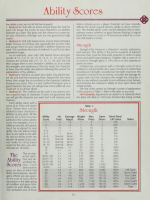Garthanos
Arcadian Knight
I think you could just have said all of them... generalized level based skill advances up to 15 and since you start out closer to level 5 analog in general (and being trained in a skill is 5pts) If we are extrapolating to the levels that 4e did not represent while you were gaining that +5 that is like +20. very akin to the amount of skill gain in some earlier editions I think that was and instance of 4e staying closer to its heritage than 5e). 4e did however have many many other buffs for skill (and that actually sometimes created a few problems)A similar situation in 2e and 3e. 4e was more on powers they were using, but as powers were class specific...well...




